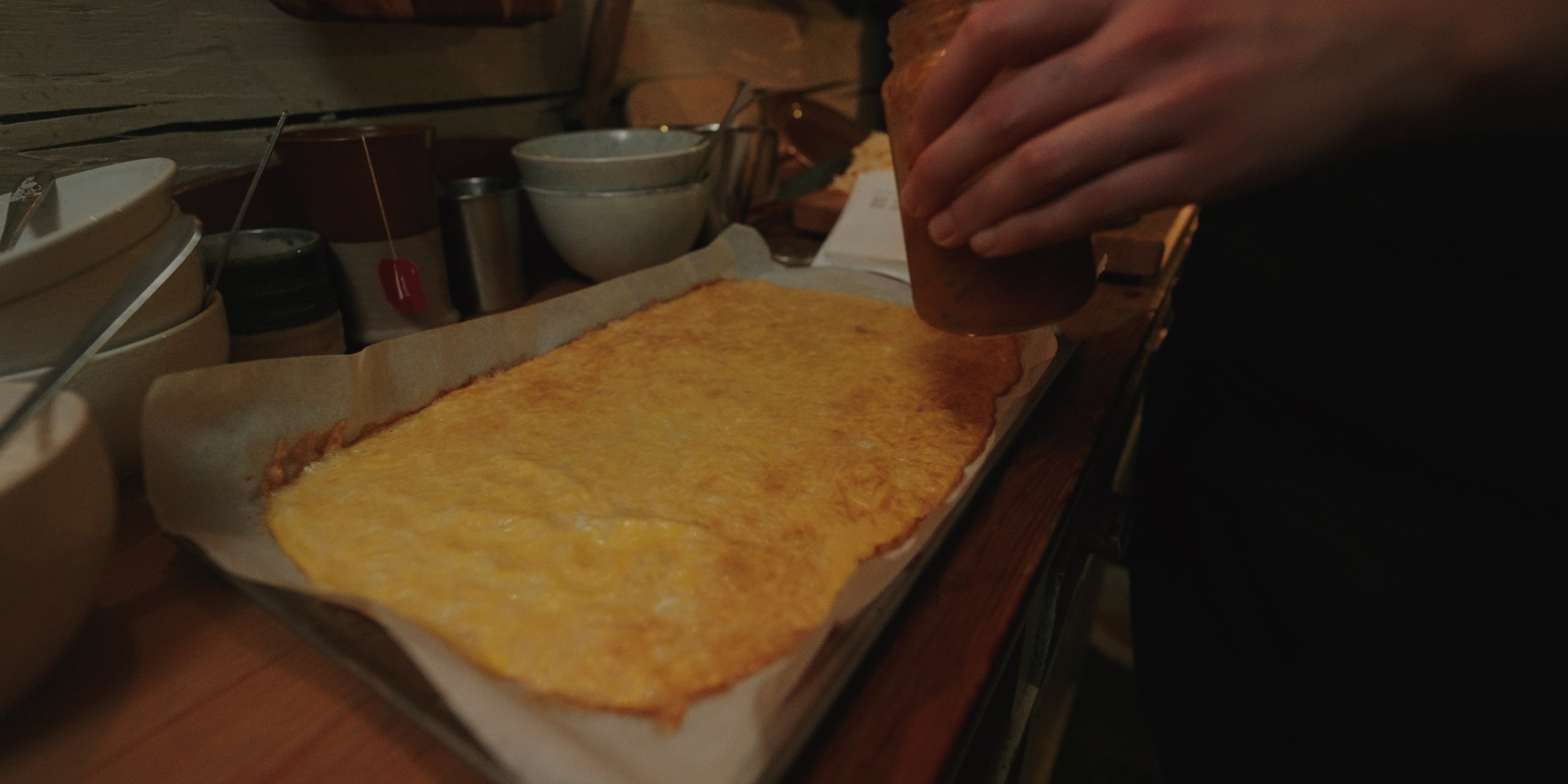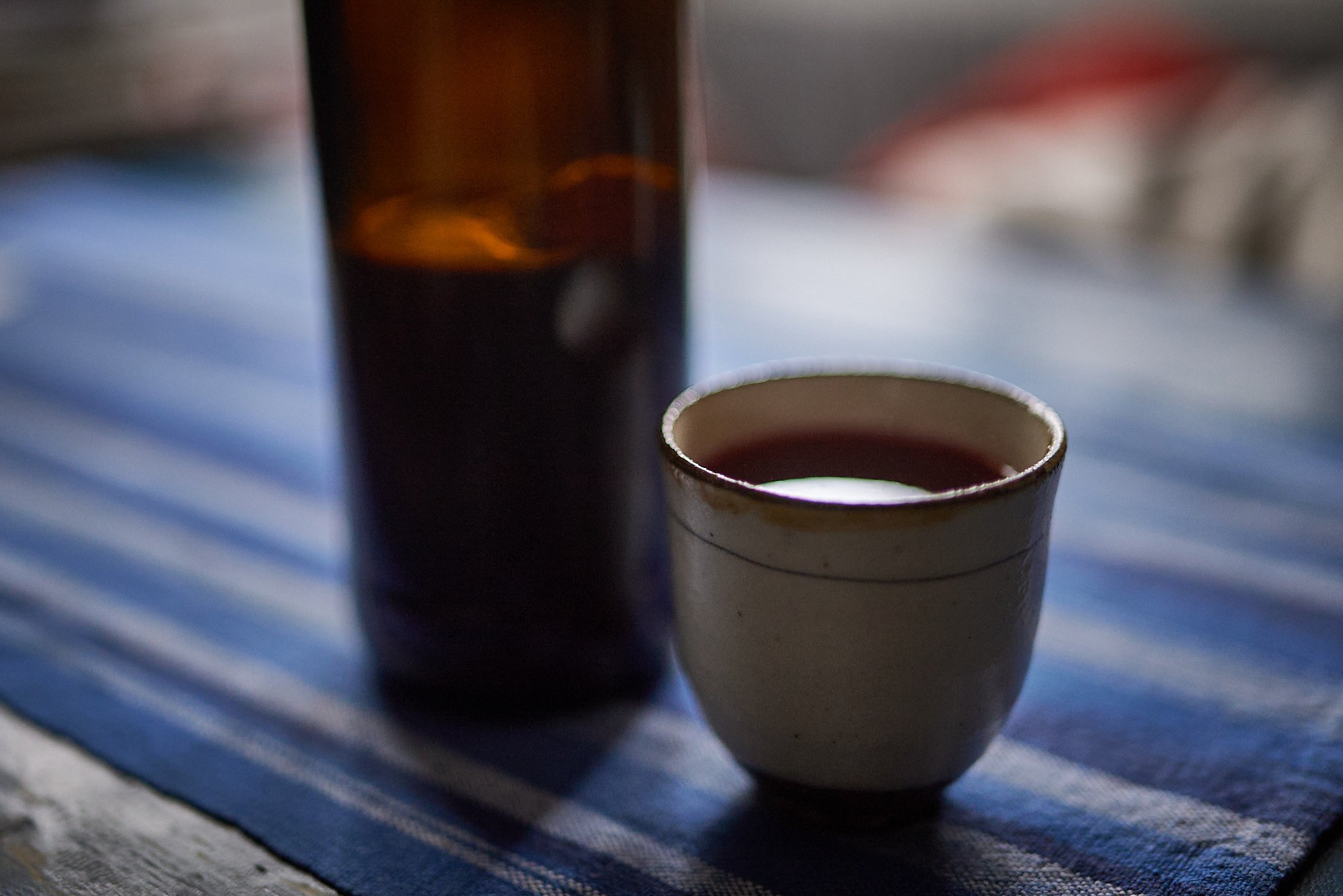Our birdhouses had the measurements for “small birds”, using 15 cm wide and 2,5 cm thick (5,9 inch*0,98 inch) planks, if the planks are thinner the woodpecker will have no problem wrecking it pretty fast.
From year to year keep an eye out at the birdhouses, if some of them are affected by the woodpecker change the house or fix it, the Great Spotted Woodpecker is a common nest destroyer for the tits, by getting inside the house and eat the eggs/chicks or feed their own offspring with it.
Do NOT use impregnated wood, its poisonous and therefore poisonous to the birds (and you).
We put together four planks to a square tube and got several houses at the same time. We sawed the tube like down below, every other straight and every other diagonally, in the example we would have gotten four ready houses that only would need a roof and a floor.
The text we read about birdhouses suggested that the roof should be around 21 cm (8,6 inch) long but we made it about 25 cm (9,8 inch) long instead, it felt like the door got more cover that way.
BUT your birdhouse can have any measurements as long as the size of the door is acceptable, the house is at least 15 cm (5,9 inch) deep (from door to floor) and you have room for at least your fist inside the house. The measurements above we read about and decided where good ones so we did that.
A good birdhouse will keep the wet out from above but let out moisture from below, so make a good roof and make a slightly smaller floor so there is room in the cracks to get rid of moisture. We made the floor easy to open with screws so that we every fall can clean out old nesting material.
Depending on what kind of birds you want to favor you make different sized doors.
There must be a minimum of 15 cm (5,9 inch) from the door to the bottom, so not predator birds or animals can reach the eggs/chicks.
Examples for the door:
Blue tit – 25-28 mm (0,98-1,1 inch), wants free “fly in” with no hindrance to the door
Marsh tit – 25-28 mm (0,98-1,1 inch), like a low placement of the house, like 50 cm (19,6inch) above ground.
Coal tit – 25-28 mm (0,98-1,1 inch), like a low placement of the house
Great tit – 28-32 mm (1,1-1,26 inch), often very dominant so to give the smaller tits a chance, make more houses with doors about 25mm (0,98 inch) big.
Willow tit – 25-28 mm (0,98-1,1 inch), fill the house up with wood shavings so the tit can “make the house by itself”.
Crested tit – 28-30 mm (1,1-1,18 inch), fill the house up with wood shavings so the tit can “make the house by itself”.
Nut hatch – 30-50 mm, they glue the door with mud to appropriate size
House sparrow – 32-35 mm (1,26-1,37 inch)
Nuthatch
So why build birdhouses in the first place?
For a bird to build a house it needs a bigger, dead, standing tree in its preferable area, some wants areas with a lot of leaf trees and some areas with pine and spruce, and therefore big, dead leaf trees or big, dead pine/spruce trees.
The different kinds of woodpeckers are the pioneers that make holes and then year after year small birds can use these natural places to nest. Also, dead trees that breaks can become a good nest in the breaking point, if it is high enough.
With today’s forestry agenda these kinds of trees, and even areas, are scarce and birds along with other animals suffers from it. Trees are not left to be old and the big monocultures with only, for example pine, have only row after row with pines and nothing in between where little birds can hide or nest.
In Sweden, the forestry companies are obligated to leave dead standing trees, so you’ll often see a vast clear cut with a few dead standing trees here and there. The birds have somewhere to build, but not in a forest, because it was removed. There is also a continuity problem with this. When the dead trees topple over, there are no big living trees in the area that can die standing to replace them. The management of the forests in the Nordic countries is a mess.
So, to help our smaller birds, build them somewhere to live and you will for sure see an increase in birds and their beautiful song!
/Tova















